Back to Sidestreet Bannerworks
Click here to find out how your engine can be featured!
.


Sir Morris de Cowley
by T.A. Barnes
Beverly, England
Photos by the author
January, 2012
Some 20 years after buying it, I eventually made a detailed examination and found that, although the chassis was in reasonable condition, several parts needed remaking or were completely missing. The boiler also needed serious attention. There were no working safety valves and few useable boiler fittings, whilst the boiler itself leaked badly, particularly at the tube plate and where the handrail stanchions had been screwed directly into the boiler itself. The stanchions were cut off and re-soldered, but this added to the already battered appearance and meant that the boiler would require cladding. This would at least allow the shape of the engine to be changed and, having grown up in York amongst LNER locomotives, I wanted it to have the look of a Gresley engine if at all possible!
After its rebuild, the engine was therefore given a “tapered boiler,” a new smokebox and door, new safety valves, a new footplate profile, a new cab, new tender details, new handrails, new couplings, etc., and finished in “wartime black” (to avoid having to line it out!), which also allowed me to plate over the front cab window to hide the pressure gauge. The offside clack box was disguised as a Westinghouse pump and the snifting valve hidden at the base of the smokebox in GWR-style, with a dummy LNER-type behind the chimney.
Awkward pipework junctions beneath the footplate were given the look of an injector. The boiler is lagged with fiberglass matting beneath the cladding and the roof slides off in the normal way to facilitate driving. The boiler has been hydraulically tested to 120 psi and was steam tested successfully, with the pop-type safety valves set at 60 psi. To my shame, since its rebuild the engine has never been run. If I manage to arrange this one day, I'll let you know how it goes (if it goes).
Footnote: The Sir Morris de Cowley locomotive was designed by LBSC. Its construction was described in Volume 54 of Model Engineer (1926) in his “Shop, Shed and Road” column.
I have been told that the engine was the result of a bet, where Curly had been challenged to design an 0-gauge engine that could pull a passenger. Sir Morris is said to be the result.
Looking at the original drawings, I felt that the loco already had the general look of a Gresley-designed product and that, if it could be given an imitation tapered boiler and LNER-style footplate curves, together with other details, it might look the part, despite the unfortunate lack of Walschaerts valve gear. On this point, I have always wondered (with absolutely no facts to back up my theory!) whether LBSC had styled the engine on the Gresley P1 class, which, in 1925, had just been introduced and was the most powerful locomotive on the UK's railways at the time -- although it was a 2-8-2 and not a Pacific. The tender, cab, boiler, chimney, etc. do have the look of a P1 and, in designing what was intended to be a particularly powerful 0-gauge model, there may have been some sort of logic in echoing the look of the most powerful full-sized engine of the time. Anyway, that's my theory!
|
|
|
| Builder | Original unknown; rebuilt by Tom Barnes 2005-6 |
| Date completed | Estimated to be 1926-1930 |
| Gauge | 0 (1-1/4”) |
| Scale | Not to exact scale, but finished in LNER "wartime black" as No. 2398 (a spare LNER number) |
| Boiler | Locomotive (five small and one large tube with superheater; one hollow and one solid stay |
| Fittings | Two clack valves (one for hand tender pump one for axle-driven pump); two pop-type safety valves, steam turret, snifting valve, pump bypass valve, blow-down valve on water gauge, pressure gauge, screw-type regulator, blower, blower valve, whistle, whistle valve |
| Fuel | Coal |
| Blow-off pressure | 60 psi |
| Cylinders | Two outside cylinders with D-valves |
| Reversing gear | Slip eccentric with linkage through frames to D-valves above cylinders |
| Lubricator | Displacement, mounted beneath smokebox |
| Dimensions | 22” long x 4-1/2” high x 2-3/4” wide |
| Weight | 8-1/2 pounds |
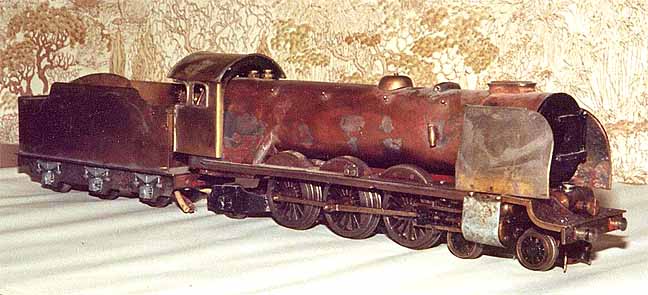
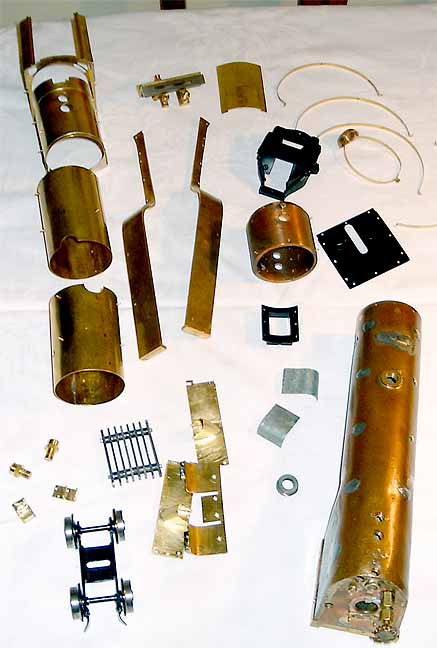

Below: The boiler front, showing the five flues and one larger superheater tube. Above the flues are the solid stay (right) and the hollow stay.
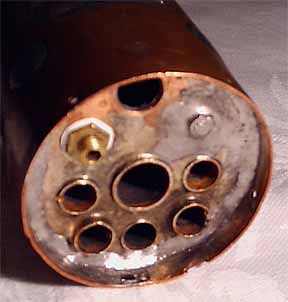
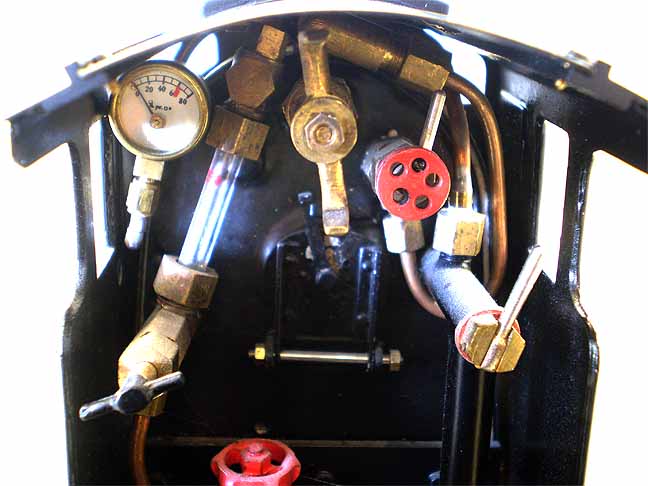


Left: The front of the locomotive. The lubricator is below the smokebox.
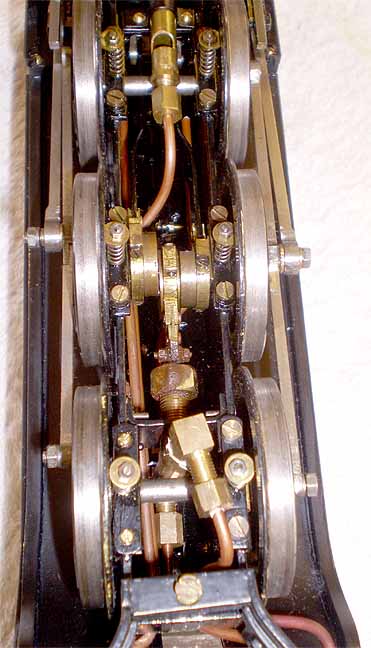

Left: The underside of the engine, showing the slip eccentrics on the center axle. Below it is the axle pump; above is the whistle.


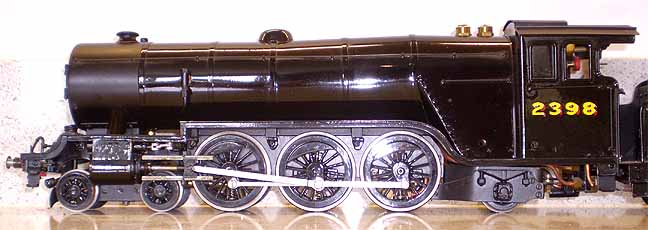
Back to Sidestreet Bannerworks
Click here to find out how your engine can be featured!
This page and its contents
Copyright Sidestreet Bannerworks, 2012